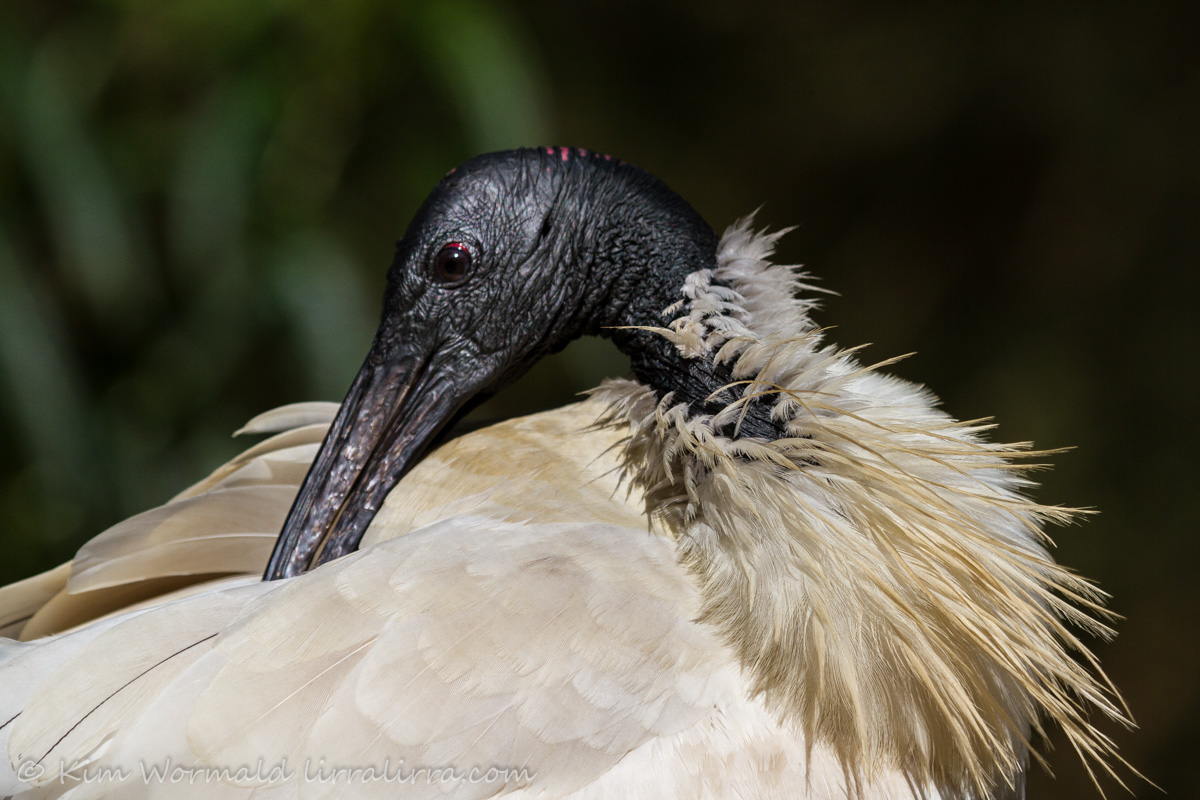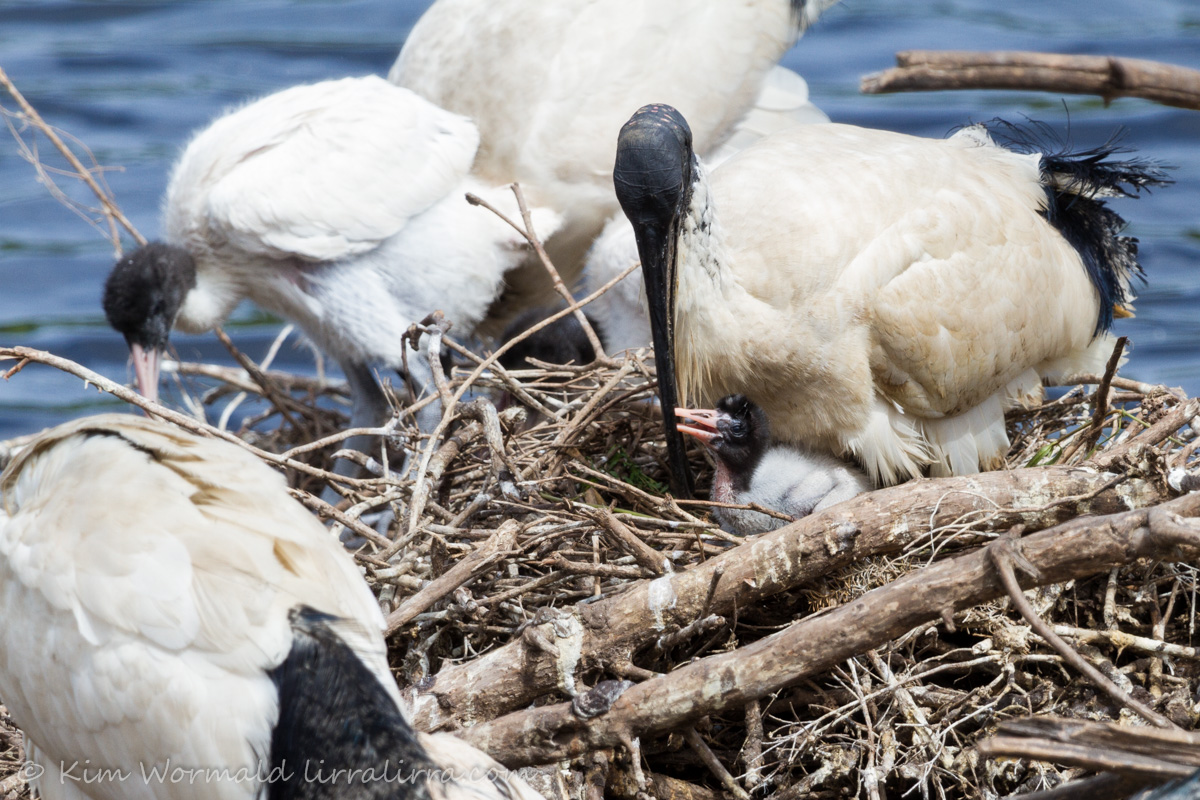The much maligned Australian White Ibis (formerly known as Sacred Ibis) are fascinating birds whose success adapting to humans could eventually be their downfall.
Australian White Ibis (Threskiornis molucca)
The image above epitomises the adaptability of ibis as this individual balances on a fence instead of a bare tree branch which would be its preferred perch in a wetland habitat.
Australian White Ibis are large water birds, about 70-75cm, that can be found in many areas around Australia apart from the driest landscapes. They used to be rare in towns and cities but as drought conditions affected wetlands they became increasingly common in urban areas where they have successfully adapted to forage in rubbish tips. Sometimes they are in such high numbers that they are considered pests in parks, gardens and especially around airports. Measures are occasionally taken to keep their numbers in check but the impact of culling on their long-term survival has been questioned by several researchers who are concerned that not enough is known about the species to ensure that no irreversible damage is being done. A favoured method of limiting numbers is to spray their eggs (generally three) with canola oil. The oil stops oxygen reaching the embryos but the parent birds continue attempting to incubate the chicks for up to two months, instead of the usual three weeks; as ibis can set two or three nests a season this method reduces numbers without killing adults or hatched juveniles.
Australian White Ibis
The pale pink area beneath an ibis’ wing turns bright red (above) during the breeding season. Other signs of breeding include pink marks on their heads and necks (just visible above but clearer in the next image), cream breast plumes, black lacy wing plumes and a yellowish tail.
Australian White Ibis – portrait
The portrait above shows details of the bald black head complete with pink ‘breeding’ colours, along with a fine collection of creamy coloured neck plumes. Male and female ibis are similar except that females are slightly smaller with a shorter bill.
Australian White Ibis – chick feeding
Ibis breed in colonies and feed their young on regurgitated invertebrates and scraps from human picnics and rubbish tips. They are given many nicknames relating to their scavenging abilities, such as ‘tip turkeys’, but the ability to adapt is actually an awesome quality that I wish more of our native species were capable of doing.
Happy birding, Kim
~ Thank you for visiting and commenting
~ If you would like a weekly email letting you know that lirralirra has been updated please use the ‘subscribe’ box above right





OH…MY….GOSH! That is the most cool looking bird I’ve seen in forever! I love that you have shots of their rather hidden breeding plumage and then geez, the chicks! So so SOOOO cool!
They are very distinctive, your comment made me smile Sherry, thank you
Magpies and Ibis, Good to see they are not forgotten because
they are common. but still present a challenge in particular getting the exposure right for black faces and feathers.
good series. thanks
Thank you Ray. I agree about the ‘forgotten’ birds, it is good to remember them.
Awesome prehistoric looking birds. Last time I was at healesville sanctuary some people were taking photos of them in an enclosure. As the ibis are actually wild and the enclosure is made to hold an emu not an ibis, the ibis walked out from under the fence and all the visitors started panicking thinking they’d escaped. Ha ha.
Definitely prehistoric looking, oddly vulture like. That’s an hilarious story about Healesville!
very interesting, thanks kim
My pleasure
We breed faster and in a less controlled way than any bird. Or animal. Only insects rival us on that front. We still feel the need to condemn other species for their adaptability and try and limit them. Hiss and spit. Climbing down from my soap box now.
We have very few Ibis here, certainly not the numbers that other cities get, so I loved this close look at them. Thank you.
“Hiss and spit” – you are so evocative EC, I hope you write a book one day. If you already have let me know the title!